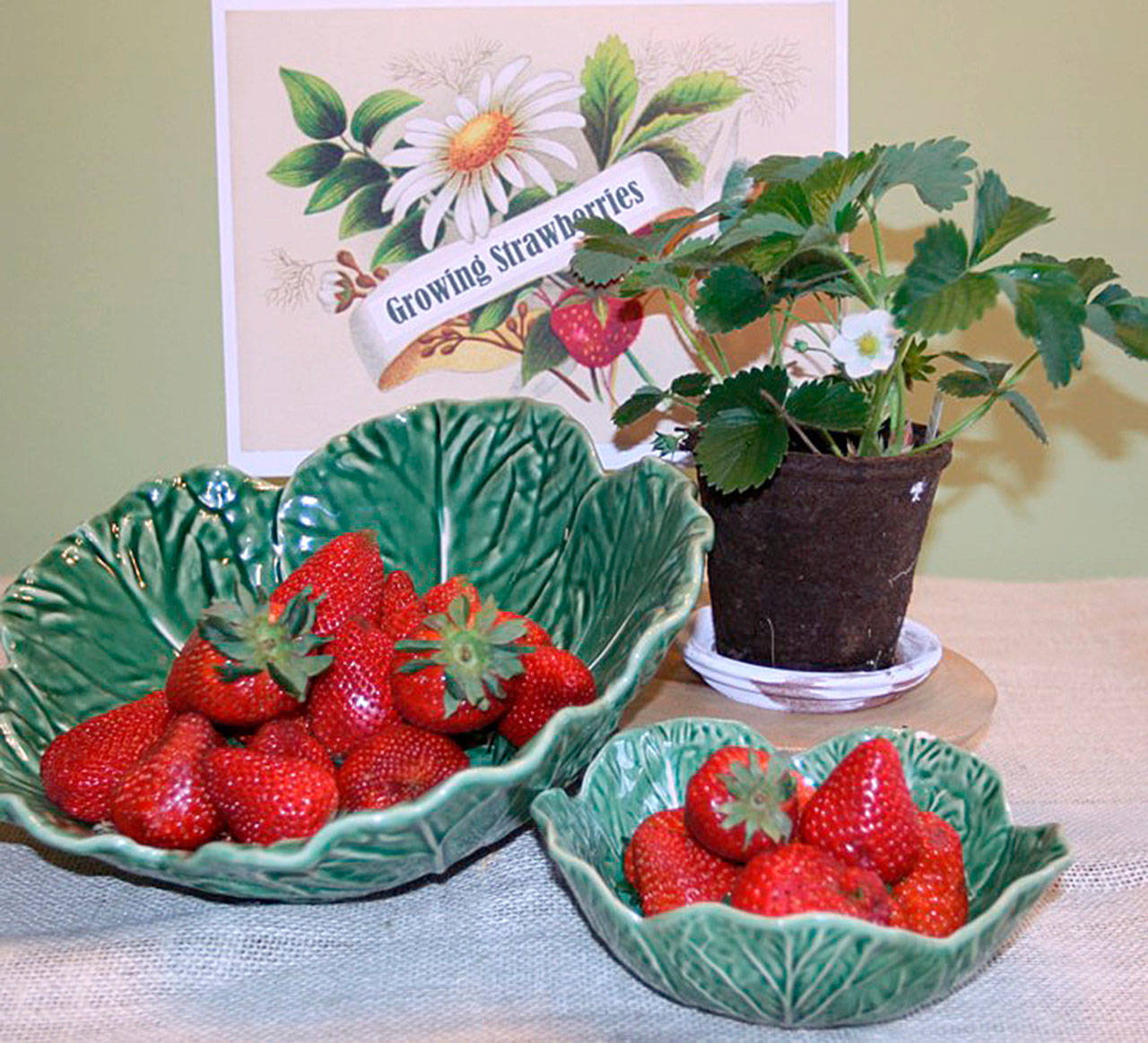Strawberries are easy to grow in the Pacific Northwest. Every home garden should have one or two plants tucked into the landscape or, even better, a couple of rows to keep the entire family satisfied.
Three types of strawberries are available: June-bearers, everbearers and day-neutrals.
June-bearers have the largest and most flavorful berries. They produce only one bumper crop each summer around June or July.
Everbearers and day-neutrals produce smaller and fewer berries. Everbearers produce two crops (one in June and one in late summer or early fall) and day-neutrals produce berries throughout the summer.
Strawberries can be purchased as bare-root plants or in containers. Bare-root plants, which seem to be little more than a bunch of roots when purchased, are sold in bundles of two or more and are much less expensive than those sold in pots. But bare-root strawberries must be planted in late winter when plants are dormant. By early spring, you will have to buy strawberry plants grown in containers at a much higher price.
Plant June-bearing varieties for high quality berries for freezing and preserving AND everbearing or day-neutral varieties for an extended harvest of fresh strawberries.
Always select strawberry varieties suited to our climate for the most bountiful harvest. (See sidebar.)
Plant strawberries as soon as the soil is dry enough to be worked in early spring. Locate plants in full sun in well-drained soil. Avoid frost pockets (low-lying areas into which cold air drains) because strawberries bloom in spring and can be damaged by late frosts.
To plant bare-root strawberries, dig a hole deep enough to allow the roots to go straight down but somewhat spread. Set plants so that the soil covers the roots completely but not the delicate crown (the growing point where new leaves emerge).
For strawberry plants purchased in containers, dig a hole twice the size of the root ball and set plants at the same depth as at the nursery.
Give plants sufficient room to grow. Because June-bearing strawberries produce lots of runners (“daughter plants”), plant them about 15 inches apart in single rows that are 3-4 feet apart.
Plant everbearers and day-neutrals 12 inches apart in two or three closely-placed rows.
Remove all runners from everbearers and day-neutrals. For June-bearers, position runners so that they fill in between the mother plants.
When a density of five or six plants per square foot is achieved, remove subsequent runners from June-bearers.
Fertilize new plants with a balanced fertilizer (one with equal proportions of nitrogen, phosphorus, and potassium) at 2, 6 and 10 weeks after planting.
Observe plant growth to guide fertilizing practices after the first year. If needed, fertilize June-bearers in late July (after the harvest) and everbearers and day-neutrals a couple of times throughout the summer.
Do not fertilize strawberries after Aug. 1.
Because strawberry plants have shallow roots, hand weed carefully. Mulch around the base of the plants to keep fruit from lying directly on the soil, conserve moisture and control weeds.
Irrigate deeply but infrequently, so that plants get a total of 1-2 inches of water each week. Use drip irrigation, if possible, to minimize wetting the fruit and foliage.
Protect your strawberries from the cold. Cover plants with 3-5 inches of loose straw after the first freeze.
In spring, remove the straw when you see new leaves emerging. Use floating row cover in early spring if plants are in bloom and frost threatens.
Strawberry plantings have a more limited life span than other berries. When productivity begins to decline (usually after 3-5 years) it is time to find a new planting site and start all over again.
Learning with Clallam County Master Gardeners
• Thursday “Brown Bag” Series: Noon-1 p.m. in the commissioners meeting room in the Clallam County Courthouse (donations appreciated). June 22 topic: “Beetles” with Master Gardener Laurel Moulton
• Annual Garden Tour (Sequim gardens): 10 a.m.-4 p.m. Saturday, June 24
A unique opportunity to gain inspiration from private gardens within our community.
For ticket sales and garden locations, visit http://extension.wsu.edu/clallam/.
Demonstration gardens
Visit our Demonstration Gardens when the Master Gardeners are working on maintaining our gardens for your enjoyment.
• Woodcock Demonstration Garden (2711 Woodcock Road, Sequim)
Open May-September on Thursdays, 10 a.m.-noon, and Saturdays, 9:30 a.m.-12:30 p.m.
• Fifth Street Community Garden (328 E. Fifth St., Port Angeles)
Open March-October on Mondays 10 a.m.-noon.
Jeanette Stehr-Green is a WSU-certified Clallam County Master Gardener.


